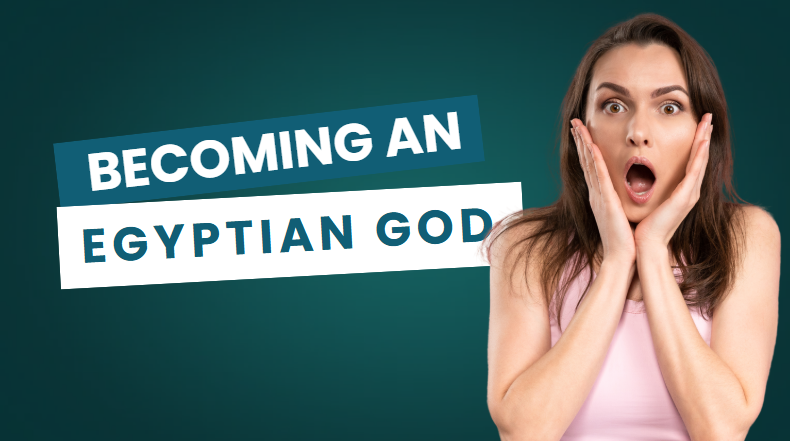
This catalog for the Oriental Institute Museum exhibition, “Book of the Dead: Becoming God in Ancient Egypt,” examines the history and significance of the ancient Egyptian “Book of the Dead.” The text traces the evolution of the Book of the Dead, from its origins in earlier funerary texts to its later development and diverse forms across various media. Scholars explore the spells, illustrations, and rituals associated with the Book of the Dead, as well as its misinterpretations in modern culture. The catalog also details the scholarly rediscovery and ongoing study of these texts. Finally, the text showcases artifacts from the exhibition, illuminating the context and significance of the Book of the Dead.
FAQ: Understanding the Ancient Egyptian Book of the Dead
- What exactly is the Book of the Dead, and is it a single cohesive book? The Book of the Dead is not a single narrative composition with a beginning and end. Instead, it is a compilation of numerous individual texts known as “spells” (or sometimes “chapters”). Each spell is self-contained with its own theme and structure, designed to aid the deceased in their journey through the afterlife. These spells vary greatly in length and content and were often accompanied by illustrations or vignettes.
- What were the main purposes of the spells within the Book of the Dead? The spells had a variety of purposes. Some provided guidance through the underworld, including knowledge to appease its guardians. Others focused on ensuring physical needs in the afterlife, such as food and water, often depicting offering tables. There were also spells for protection, to ensure the deceased’s heart would not testify against them, and spells intended for transformation and divine assimilation, allowing the deceased to become divine. Ultimately, they were meant to ensure the deceased could achieve akh-hood, a transfigured and blessed state.
- How did the illustrations (vignettes) function in the Book of the Dead, and what was their significance? Vignettes in the Book of the Dead were more than just decorative elements; they visually represented the utterances in the spells. These colorful illustrations could be considered as visualizations of the text, making complex ideas more accessible. The style and content of the vignettes can be used to date manuscripts and understand local traditions and they were not always uniform over time or location. Some vignettes became more elaborate over time, with a tendency to overemphasize their importance in comparison to the text.
- What role did the “negative confession” and the weighing of the heart play in the Book of the Dead? Spell 125 contains the “negative confession,” where the deceased asserts their faultless behavior in life before 42 gods in the Hall of Two Truths. This is followed by the heart being weighed against the feather of Maat (truth/justice). This pivotal scene aimed to determine if the deceased had lived a righteous life and was worthy of entering the afterlife. A favorable outcome meant continued existence in the afterlife, and spells were included to help achieve such a result.
- How were the texts of the Book of the Dead transmitted, and what is the significance of variations and “another saying” (ky dd)? Scribes copied and compiled texts from various sources, sometimes introducing errors or variations. Some scribes attempted to resolve errors or reconcile different versions. The phrase “another saying” (ky dd) was used by scribes to note variations in vocabulary, phrasing, and deity choices between manuscripts, showing a clear effort to maintain a complete version of spells. Modern textual analysis, through tracing consistent errors, creates a ‘tree of transmission’ showing how texts evolved.
- What does the Book of the Dead reveal about the ancient Egyptian concept of divinization or becoming a god after death? The Book of the Dead emphasizes the concept of the deceased becoming divine through identification with various gods, especially Osiris and Re, as well as through identification of the deceased’s body parts with specific deities. Spells assert that “I am” a particular deity, or that “my limbs are the limbs of a god”, showing a belief in merging the deceased with the divine realm and the concept of the ‘indwelling’ god in the individual. Furthermore, the depiction of the deceased alongside or equated with underworld deities shows they were considered to become part of the divine realm. The term akh refers to the transformation of the deceased, who has successfully crossed the threshold of death, into a blessed spirit.
- How do other funerary items and practices, like magic bricks, heart scarabs, and the Book of Breathing, relate to the Book of the Dead? Magic bricks were placed in tombs, often in relation to cardinal points, and were inscribed with spells from the Book of the Dead to protect the deceased. Heart scarabs, inscribed with protective spells, were placed on mummies to prevent the heart from testifying against the deceased during judgment. The Book of Breathing, sometimes placed under the head of the deceased, shares common themes with the Book of the Dead, such as the divinization of the deceased through the identification of body parts with gods and was designed to aid transition to the afterlife. All of these elements worked in tandem to ensure the deceased’s safe passage and existence in the afterlife.
- How was the Book of the Dead understood, interpreted and even appropriated by later cultures and individuals? The Book of the Dead has been subject to a variety of interpretations, both in ancient and modern times. Some have tried to compare elements within the Book of the Dead with other religious traditions, such as Tibetan Buddhism, and others have sought to view it through the lens of mystical or spiritual understanding and practice. Even within the scholarly study of the book, researchers have sought to categorize and analyze the various spells and illustrations with new methodologies and technologies, in addition to engaging in the study of the origins and variations in the texts. It continues to fascinate those who seek to understand ancient Egyptian concepts of death and the afterlife.
Short Answer Quiz
- What is the Book of the Dead, and how is it structured?
- Describe the purpose and significance of vignettes in Book of the Dead manuscripts.
- Explain the concept of textual criticism as it applies to the study of the Book of the Dead.
- What does the phrase ky ḏd indicate in Book of the Dead manuscripts?
- How did the use of linen shrouds as a medium for the Book of the Dead change over time, and what material replaced them?
- What was the function of magic bricks in Egyptian funerary practices, according to the Book of the Dead?
- Explain the concept of “divinization” of the deceased as expressed in the Book of the Dead.
- What is the significance of the weighing of the heart ceremony, as depicted in Book of the Dead spell 125?
- Describe the roles of the ka, akh, and ba in the afterlife, as understood in the Book of the Dead.
- How did scribes ensure the accuracy and authority of Book of the Dead texts?
Answer Key
- The Book of the Dead is not a single narrative but a compilation of many smaller, self-contained texts known as “spells,” sometimes called “chapters” by scholars. These spells were intended to guide the deceased through the afterlife.
- Vignettes are illustrations found in Book of the Dead manuscripts; they often accompany specific spells and can be used to help interpret the text. The vignettes sometimes visualized the content of the spells and sometimes are considered to stand alone for the utterances to which they pertain.
- Textual criticism involves tracing small linguistic variations in the text of the Book of the Dead to map the history of the manuscript and its related tradition. This helps identify the origin of particular errors and the practices of the scribes who copied the text.
- The phrase ky ḏd, meaning “another saying”, was used by Egyptian scribes to indicate variations in vocabulary, phrasing, or choices of deities between different manuscripts or to add a gloss with a comment to the text.
- Initially, Book of the Dead texts were written on linen shrouds, but with time the use of large-dimensioned linen shrouds decreased, and papyrus became the primary material for producing the manuscripts.
- Magic bricks, usually four of them placed in the burial chamber related to the cardinal points, were inscribed with spells intended to protect the deceased’s mummy. Each brick had specific instructions for use, and may have held amulets.
- Divinization in the Book of the Dead involves the deceased’s identification with various deities, sometimes in whole and sometimes by divinizing individual parts of the body. This process transforms the dead person into a divine being.
- The weighing of the heart ceremony, in spell 125, depicts the deceased’s heart being weighed against the feather of Maat to determine if the deceased was righteous in life. A negative confession is included in this ritual where the deceased denies having committed 42 different sins.
- The ka is the life force or spirit, and the heart scarab prevented it from revealing misdeeds; the akh is a transfigured, blessed spirit assimilated to the gods, and the ba indicates a transfigured status related to freedom of movement. All of these entities are part of Egyptian beliefs about the afterlife.
- Scribes ensured accuracy and authority by carefully noting variations in manuscripts, indicating them with ky ḏd, and by consciously making revisions to eliminate ambiguity or by using variants to try and present all options for a phrase or word in the passage.
Essay Questions
- Discuss the evolution of the Book of the Dead from the Pyramid Texts and Coffin Texts, focusing on changes in format, content, and purpose, and explain how the Book of the Dead reflects changes in Egyptian society.
- Analyze the role of vignettes in the Book of the Dead, considering their artistic style, symbolism, and relationship to the accompanying texts, paying particular attention to how they aided the deceased.
- Explore the concept of transformation and divinization of the deceased in the Book of the Dead. How does the text and imagery demonstrate a process of becoming god, and what specific strategies do the spells employ?
- Examine the ways in which scribes revised and altered the text of the Book of the Dead, and analyze the reasons for these changes, using specific examples to support your argument. Consider the importance of scribal agency in the tradition of the Book of the Dead.
- Compare and contrast the different types of funerary objects related to the Book of the Dead, including papyri, amulets, and magical bricks. What was the purpose of each object, and how did these objects interact to aid the deceased?
Glossary of Key Terms
- Akh: A transfigured, blessed dead person who has been successfully made divine. The state of akh-hood.
- Amemet: A demonic figure known as the “Devourer of the Dead,” who is depicted as part of the judgement scene and who sits in front of the scales ready to consume the hearts of the wicked.
- Ba: A transfigured status of the deceased related to freedom of movement; sometimes, supernatural forces when used in the plural.
- Book of Breathing: A funerary text that identifies the deceased’s limbs with gods, often placed under the head of the deceased.
- Coffin Texts: Mortuary texts written on coffins and sarcophagi, which predate the Book of the Dead and contain similar themes and spells.
- Duat: The Egyptian underworld, where the deceased must navigate to reach the afterlife.
- Ennead: A group of nine deities in Heliopolitan theology, including gods such as Shu, Tefnut, Geb, and Nut.
- Haplography: A scribal error in which a scribe unintentionally skips text due to similar signs in the manuscript.
- Hieratic: A cursive script used in ancient Egypt, often for writing on papyrus and other portable materials.
- Hieroglyphic: The formal writing system of ancient Egypt, often used for monumental inscriptions.
- Hotep-di-nisut: An offering formula commonly found on stelae and in other funerary contexts, meaning “an offering which the king gives.”
- Ka: The life force or spirit that is part of the deceased’s being.
- Khat: A white headcloth that completely envelops the hair, commonly worn by both men and women.
- Ky ḏd: A phrase meaning “another saying,” used by scribes to indicate variations in manuscript texts.
- Maat: The goddess of truth, justice, and cosmic order, whose feather was used to weigh against the heart in the judgment of the dead.
- Netjer: The Egyptian word for “god,” represented by the hieroglyph of a cult flag.
- Nut: The sky goddess, often depicted arched over the earth god Geb, and a significant figure in creation myths.
- Osiris: The god of the dead and resurrection; a central figure in the Egyptian afterlife and often associated with the deceased.
- Pyramid Texts: The oldest collection of religious texts from ancient Egypt, inscribed on the walls of pyramids and containing spells and rituals for the king.
- Sakhu: A specific class of rituals meant to cause one to be akh, especially to be “made divine.”
- Stela: A vertical slab of stone, wood, or other material, often decorated with scenes and inscriptions.
- Textual Criticism: The analysis of differences between multiple copies of a text to determine their original form and transmission history.
- Ushabti: Small funerary figurines intended to act as servants to the deceased in the afterlife.
- Vignette: An illustration or image included in the Book of the Dead papyri, often accompanying specific spells and often used as a visual interpretation of the text.




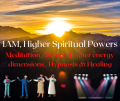

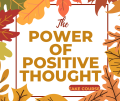

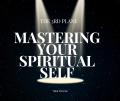

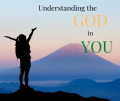
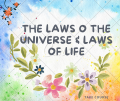










0 responses on "The Language of Immortality: Understanding the Scripts of the Book of the Dead"